Foraying into the realm of electric scooters will never be complete until you bid adieu to your petrol-powered steed. We find out if the Gemopai Astrid Lite will tempt you to make that radical decision
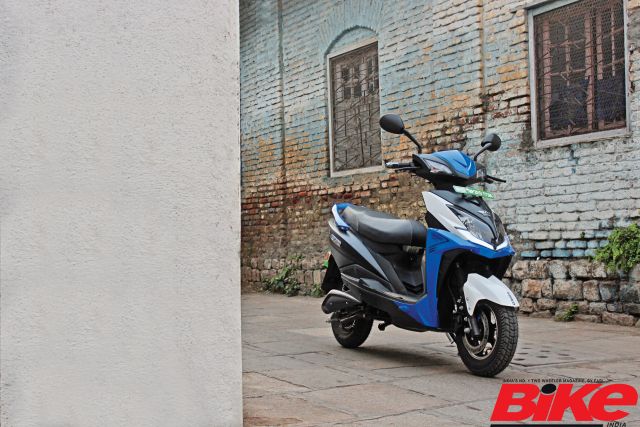
At this point in time, thenumber of people chanting “EVs will never be as fun as engines” has fallen. In fact, some have even defected to the battery camp, going “ooh” and “aah” over 0-100 km/h figures and futuristic designs. Obvious climate change and alarming pollution levels have played a big role in this change, not to mention the mind-blowing performance some EVs are capable of.
India, too, is moving steadily down this electric avenue and new EV manufacturers keep popping up every now and then like mushrooms after rain. How many of these EVs are worth the money and will they replace the means of transport that we are used to? These were a couple of thoughts that crossed my mind as I rode home at a decent pace without the sound of an engine to justify the speed. I was astride the new Gemopai Astrid Lite electric scooter and that was just the first day of the test.
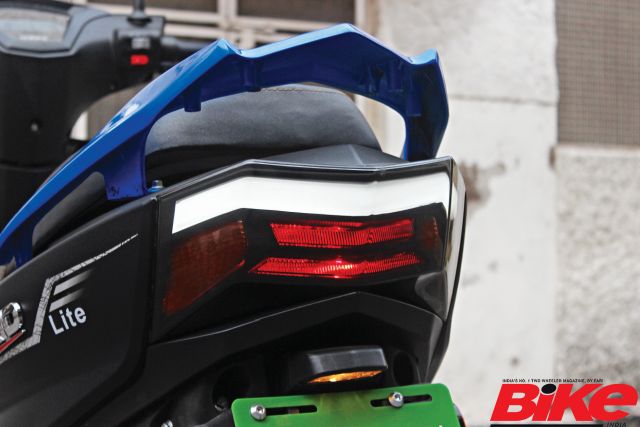
Gemopai is a joint venture between Goreen e-mobility and China-based Opai Electric that was established in 2016 and the Astrid Lite is their second product in the Indian market. Design and styling have been kept as close as possible to a conventional scooter with the additional appeal of a sharp and sleek bodywork. The youthful paint scheme works in the Astrid Lite’s favour and makes a few elements on the scooter stand out. Unfortunately, the instrument cluster does not reflect the kind of contemporary thought that went into the design of the bodywork. The layout and display are extremely basic; further let down by a row of tell-tale lights that are difficult to identify during the day. The scooter features a speedometer, odometer, and a trip meter that resets itself every time you turn the key. That defeats the purpose of a trip meter, does it not?
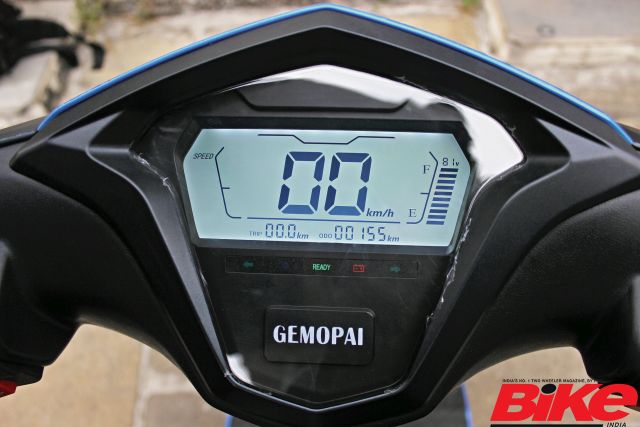
The Astrid Lite’s dimensions did not give me (and a pillion) the benefit of space that I am used to thus far on most scooters. It is not a deal-breaker, though, and one could get used to it for short rides within town. As with regular scooters, there is decent volume for under-seat storage but it doesn’t fit most full-face helmets. Considering that the Astrid Lite’s powertrain and batteries take up lesser space than fuel-tanks and engines, Gemopai could have been smarter about the layout to provide more under-seat storage.
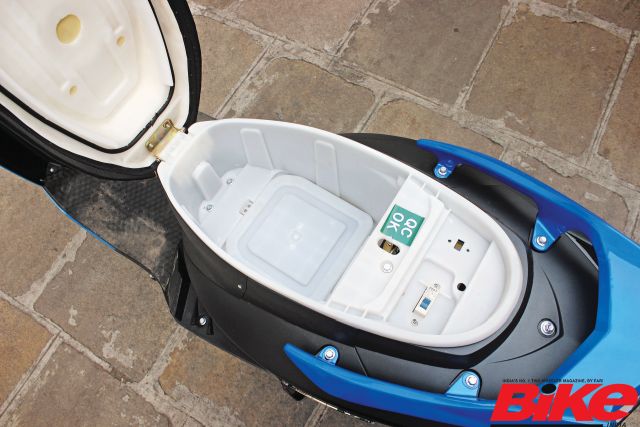
Immediately below the storage area is the housing for the 1.7-kWh lithium-ion battery pack. Installing and removing the battery is fairly simple once you come to terms with the 8.5-kg heft. Otherwise, you can also connect the charger directly to the scooter and wait for three to four hours for a full charge from a regular household power outlet.
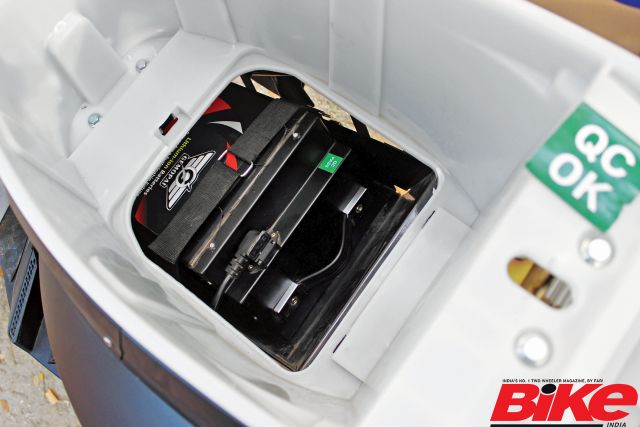
The Astrid Lite is propelled by a brushless DC hub motor at the rear wheel and it produces a peak power of 2.4 kW (3.26 hp). This output is harnessed by three modes: Eco, Comfort, and Sport. Gemopai claim that Eco mode is capable of clocking 100 km on a full charge but, with a terminal speed of 30 km/h, it quickly became the mode I paid the least attention to.
On to Comfort then. With a top speed of 40 km/h, it is more practical than Eco for use on congested roads. Sure, 40 km/h is not a top speed to be proud of but the electric motor’s quick response allows the Astrid Lite to sail past vehicles without lingering for too long. As for the range, I got a solid 55 km on a full charge. Of course, this figure was the outcome of my riding style. Perhaps, more lenient use of the throttle could result in a better range. However, that run was not without incident. The performance was strong and consistent until the battery level dropped to 80 per cent. From then on, the pace dwindled steadily, ultimately reaching crawling speeds as I reached the end of the battery’s charge. However, this inconsistency in performance was not the biggest bone I had to pick with the Astrid Lite.
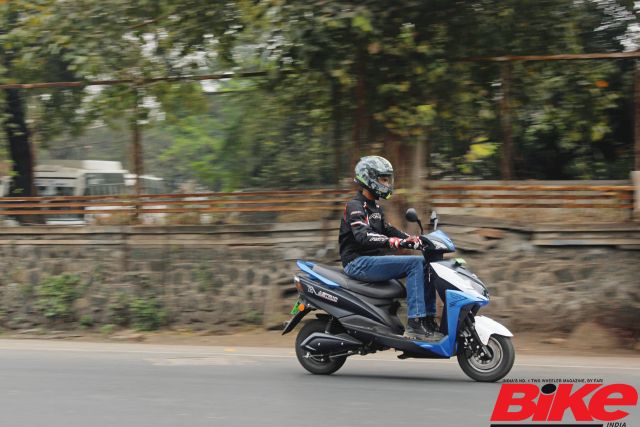
For any motor vehicle, the fuel-gauge is crucial in planning the day. The instrumentation displayed a little less than 50 per cent charge in the battery but promptly dropped to two bars and the scooter came to a dead halt within two km, leaving me stranded with a vehicle of the future that now relied on one hp (human power) to propel it home.
With Sport mode, the story remains the same with some minor changes in the script. It is noticeably quicker than Comfort and is a legitimate hoot to ride around town but, as before, the power tapers off as the battery depletes. Interestingly, the Sport mode was not as demanding as I expected because I achieved exactly 55 km from a full charge; same as in the Comfort mode. That’s fishy. Furthermore, the indicated top speed on the console was 72 km/h while the true speed was registered at 52.5 km/h. Certainly a little recalibration required there.
Out on the street, the Astrid Lite is fun to ride and it makes you forget everything else for a while. It reacts to steering inputs instantly and that goes well with the instant torque from the motor. It climbs to full speed quickly with only a low-pitched whine to indicate your presence as you float past that guy who burnt a hole in his pocket for an after-market exhaust system. In terms of ride quality, it irons out most of the small imperfections on the road and is fairly good for city use. The suspension set-up leans towards the stiffer side but not uncomfortably so and the ride improves noticeably with a pillion on board. A single disc at the front and a drum at the rear take care of dropping anchor in a hurry. We managed 40-0 km/h within 7.65 metres in 1.47 seconds. Not bad at all.
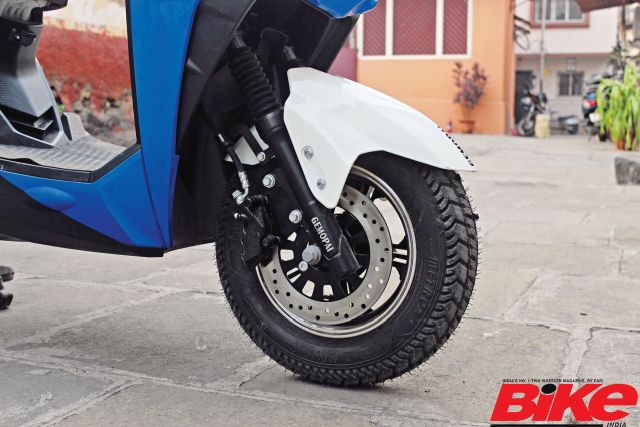
Overall, the Gemopai Astrid Lite has a lot of room for improvement to live up to its claims on paper. While the build and plastic quality do not reflect the price tag of Rs 80,000, the more immediate problem is the erroneous display and, perhaps, the programming. For what it is, the Gemopai Astrid Lite is a good electric vehicle but it may find its clientele limited to the well-heeled who fancy reducing their carbon footprint. Or you can choose to ignore the display and plan your day’s commute within 55 km; it worked for me. So, will it replace a regular scooter? Not likely. Well, at least, not in this iteration.


Leave a Reply